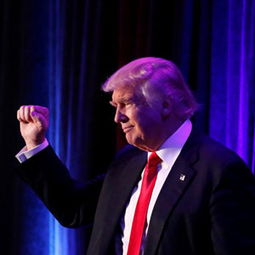President of the United States: A Comprehensive Overview
The President of the United States is the head of state and the head of government of the United States. This position is one of the most powerful in the world, and the person who holds it has a significant impact on both domestic and international affairs. In this article, we will delve into the various aspects of the presidency, including its history, responsibilities, and the election process.
History of the Presidency

The presidency was established by the United States Constitution, which was adopted on September 17, 1787. The first president, George Washington, was elected in 1789. Since then, the presidency has evolved significantly, with changes in the way presidents are elected, the roles they play, and the powers they hold.
Responsibilities of the President

The President of the United States has a wide range of responsibilities, which can be divided into several categories:
-
Executive Powers: The President is the head of the executive branch of the federal government, which includes the Department of Defense, the Department of State, and other executive departments and agencies. The President has the power to appoint and remove executive officers, negotiate treaties, and issue executive orders.
-
Legislative Powers: The President can propose legislation to Congress, but cannot directly pass laws. The President can also veto legislation passed by Congress, although Congress can override a veto with a two-thirds majority in both houses.
-
Judicial Powers: The President has the power to appoint federal judges, including Supreme Court justices. These appointments are subject to confirmation by the Senate.
-
Foreign Policy: The President is the chief diplomat and has the power to conduct foreign relations, negotiate treaties, and send military forces into action.
-
Domestic Policy: The President is responsible for implementing and enforcing federal laws, as well as for proposing policies and programs to Congress.
Election Process

The President of the United States is elected by the Electoral College, which is a group of electors chosen by the states. Each state has a number of electors equal to the number of its senators and representatives in Congress. The candidate who receives a majority of the electoral votes (at least 270 out of 538) becomes the President. If no candidate receives a majority, the House of Representatives selects the President from the three candidates who received the most electoral votes, while the Senate selects the Vice President from the two candidates who received the most electoral votes.
Presidential Inauguration
The President is sworn into office on January 20th following the general election. The inauguration ceremony is a formal event that takes place at the United States Capitol in Washington, D.C. The President takes the oath of office, which is administered by the Chief Justice of the United States Supreme Court.
Presidential Terms
The President of the United States serves a four-year term, and can be elected to a maximum of two terms. This was established by the Twenty-Second Amendment to the United States Constitution, which was ratified in 1951.
Presidential Libraries and Museums
After leaving office, former presidents are required to establish a presidential library and museum to preserve their records and legacy. These libraries and museums are located throughout the United States and serve as a resource for researchers and the public.
Presidential Salaries and Benefits
The President of the United States is the highest-paid public official in the United States. The current annual salary is $400,000, and the President is also entitled to a variety of benefits, including a residence at the White House, Secret Service protection, and a pension upon leaving office.
Presidential Trivia
Here are some interesting facts about the presidency:
| Fact | Description |
|---|---|
| Oldest President | Donald Trump was the oldest person to be elected President at age 70. |
| Youngest President | John F. Kennedy was the youngest person to be elected President at age 43. |
| Longest-Serving President | Franklin D. Roosevelt served four terms, from 1933 to 19
|
